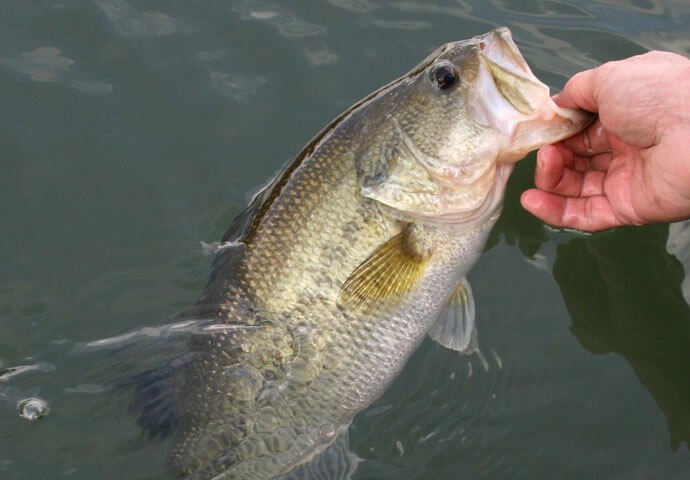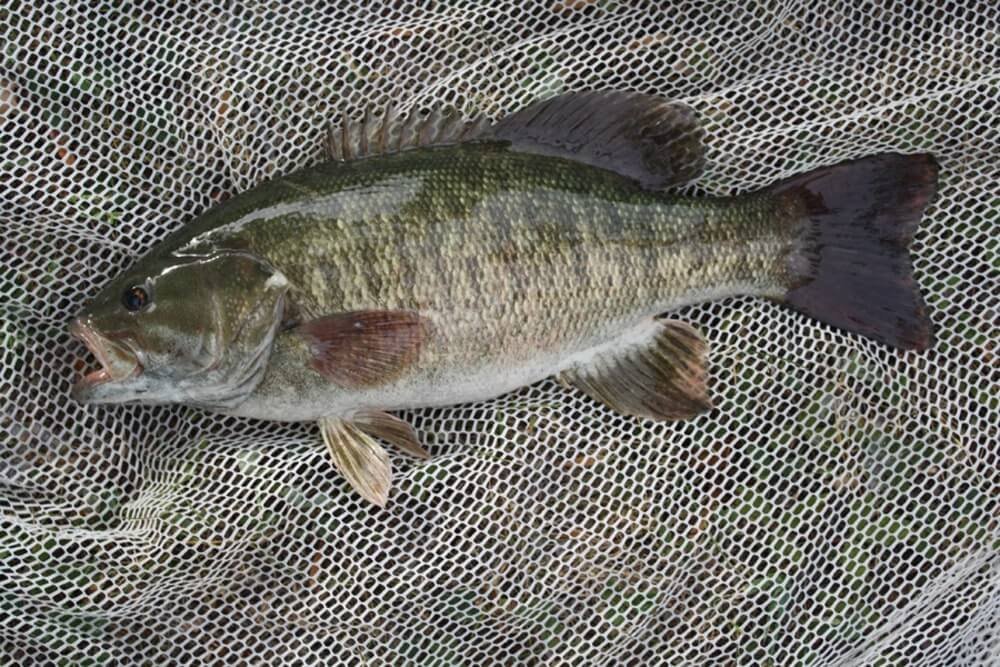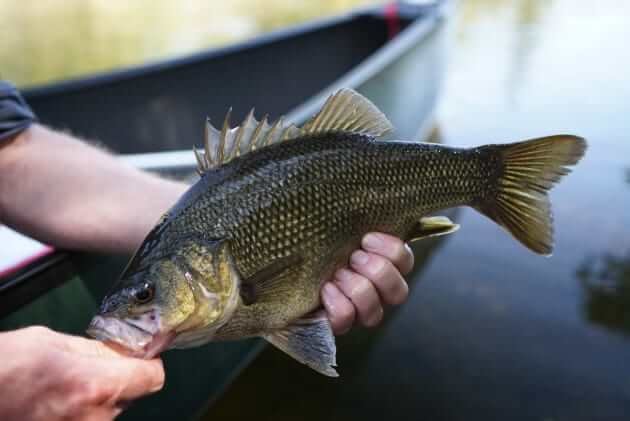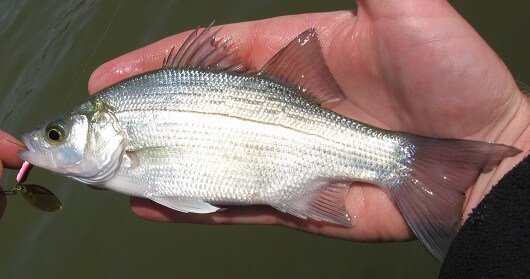Bass aquaponics; this may not be the first thing that comes to mind when you start to consider growing your own plants and fish. But, bass is actually a great choice for any aquaponics system. They are surprisingly easy to look after, hardy and they taste great.
You may not have realized it, but there are actually many different species of bass for aquaponics. It is important to familiarize yourself with the different species before you select the one that is best for your bass aquaponics system.
Bass Species
There are many different types of bass you can successfully introduce and nurture in your aquaponics system. The following are some of the most popular species which should help you t succeed with your bass aquaponics system:
- Largemouth bass

The largemouth bass is often referred to as the wide-mouth bass, bigmouth, or even the bucketmouth. The consensus is that this fish has a big mouth.
In fact, there are two strains of the largemouth bass; the Florida strain and the northern strain.
The Florida version is larger than the northern one and generally lives for longer. However, it is not very tolerant of lower temperatures; which means it is only an option if you live in a warmer climate or are prepared to spend on a water heater.
This type of bass is generally olive green with dark marks that create a stripe across each of its flanks. This is also the largest of the black bass, it can reach 30 inches in the wild and weigh as much as 25 pounds.
It is worth noting that the northern version of this fish is easy to train but it could jump out of your tank, a lid will be essential.
- Smallmouth bass

You won’t be surprised to learn that this bass has a much smaller mouth than the largemouth bass! The smallmouth bass lives in freshwater and is also called the brown bass, smallie, or even the bareback bass.
It is known to live in the more temperate climes of North America and is brown. You’ll instantly notice its vivid red eyes and the dark brown stripes across its body. This is a much smaller fish, measuring just 4-6 inches and 3 pounds in weight.
- Hybrid striped bass

This is actually a cross between a striped bass and the white bass, you may hear it referred to as a Whiterock bass or even a wiper.
This silver bass looks very similar to the striped bass, except that the stripes on this bass are actually several broken lines across the body.
- Australian bass

This version of the bass lives in the streams and small rivers that border Australia’s coastline. You can actually find the Australian bass in a variety of colors, including gold, red, green and brown. They have the longest body of any bass and a forked tail fin. Full grown they should be between 8 and 12 inches while weighing up to 1 pound.
It is important to be aware that this species has sharp flat spines on its gill covers, they can cut you.
- White bass

The white bass or sand bass is another freshwater version of the bass. It is common in the Midwest area of America and, although it’s called a white bass, it can actually be anything from silvery white to pale green. You’ll find that its belly is lighter in color than it’s back, it also has thin, dark stripes running along each side of its body.
 I have written a book that contains all the information you need to get started with aquaponics.
I have written a book that contains all the information you need to get started with aquaponics.
Don’t be the person that makes painful mistakes during your first aquaponics build!
It has 265 pages filled with information about aquaponics. It’s available in paperback or eBook format.
You can buy it here on Amazon.com
Bass Growth Rate
The exact growth rate of bass for aquaponics will vary depending on the size of the tank, food quantities and the species you have chosen. But, the average bass should grow to between 2 and 8 inches in the first year. It could take them another 2 years to be fully grown, at approximately 10 inches.
In order for the eggs to hatch successfully the bass need to be kept in temperatures between 65°F and 75°F, although 72°F seems to be the optimum setting.
It is possible to increase the rate of growth by feeding your bass a protein-rich diet. It’s worth noting that the eggs will usually hatch within two days of being fertilized. The fingerlings will grow fairly quickly, they should reach 2 inches within the first 6 months.
Ideal Temperature For Bass
Bass is a very tolerant fish. It can withstand temperature changes within the range of 55°F to 85°F without any visible difference to their behavior or growth rate. This makes it a great choice for your aquaponics system; even if you suffer from cooler winters.
Don’t forget this is not the air temperature, this is the temperature of your water. Of course, the nearer the top end of the scale that the water temperature is, the more active the fish will be. This will increase the number of foods they eat and the amount of waste they produce for your plants and vegetables.
In general, your bass will prefer the ammonia levels to be below 1ppm with the level of dissolved oxygen between 3-10mg/l, and a pH of between 7 and 8.
Pros and Cons Of Bass Aquaponics
As always, before committing to any system it’s a good idea to take a look at the pros and cons of the system. These are the advantages of a bass aquaponics system:
- Hardy
It doesn’t matter if the water is warm or cold, the bass can survive and even flourish. It is an underestimated and surprisingly hardy fish.
The same is true for ammonia levels and even the pH, bass can tolerate relatively large changes in their environment without getting sick. Of course, significant changes are likely to alter their behavior slightly.
- Top Feeders
Because bass only ever feeds on the top of the water you’ll be able to instantly see how much food to give them. If the food doesn’t get eaten and starts to sink, you’ve given them too much. That is a great way to control the feeding levels of your fish.
- Low Protein
Surprisingly, bass doesn’t need to have a high protein diet. That makes it much easier to look after the fish as you don’t need to be too strict with the diet.
- Taste Great
It’s fair to say that all species of bass taste fantastic. This may not be an issue if you are planning on keeping your bass in the aquaponics system. But, if you want to eat them it’s good to know bass can be cooked in virtually any way you like and will taste fantastic.
And the disadvantages:
- Potassium Levels
Bass is surprisingly vulnerable to changes in potassium. If there is too much potassium in the water, the bass will become ill. A supplement should be sufficient to ensure this is not an issue.
- Time
As with any new aquaponics system, it will take time and patience to get it set up right and working properly. You should be aware of this before you start as this will help you to reduce fish losses; although there will almost certainly be some.
Bass for Aquaponics FAQ
What to feed bass in a fish tank?
The first thing to note is that bass are not generally bottom feeders. When choosing the right food for them t should even float on the surface or sink very slowly. Any food that hits the bottom is likely to be wasted and could increase the toxicity of the water.
In your aquaponics system bass like to eat worms, insects and will happily eat pellets. Of course, in the wild, they are likely to eat yabbies, shrimp and other small fish as well. The greater the variety that you can give your fish the happier they will be.
Are bass carnivores?
Yes. The bass is not generally a fuzzy eater, they will consume anything that they can get in their mouth, whether that is other fish, insects or some plant life.
Can I mix bass with other fish?
Bass are actually quite good at mixing with some other fish, such as catfish and trout. Of course, you need to be aware of the exact species you are going to keep to ensure they are similar sizes. They may not eat each other but they can be bullies if other fish are significantly smaller.
Where to get bass for aquaponics?
The best place to purchase bass is from an aquaponics specialist; if you don’t have one locally you should be able to order online.
However, before you commit to buying any and getting your bass aquaponics system established, you must remember that this is not a fast growing fish. It can take 3 years to grow to full size; that’s great for supplying nutrients to your plants but not so good if you were hoping to eat the fish.

Nick loves building, managing and giving others advice on aquaponics. He created this website to do just that. He is the author of Aquaponics for beginners. If you got a question contact him here or read more on the about page here.
